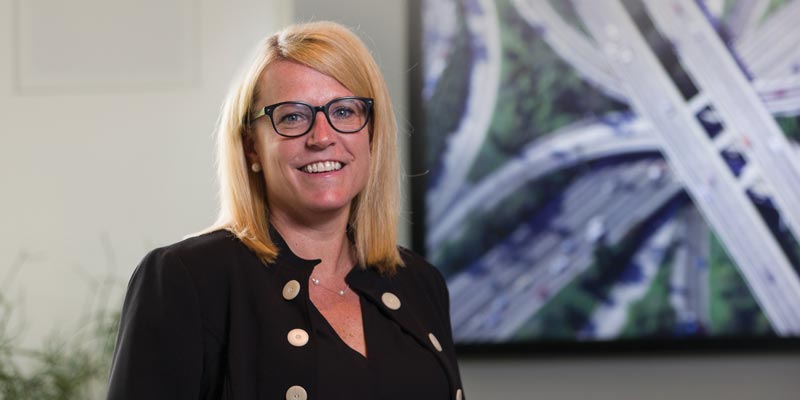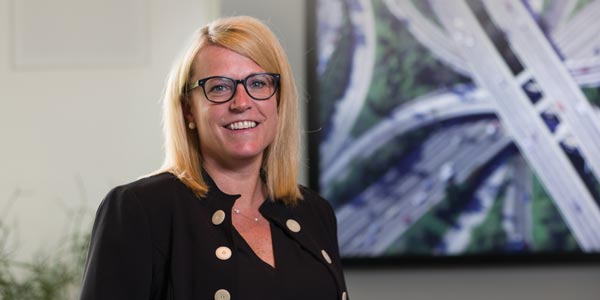
You step into the Verizon Innovation Center and you’re met with the latest in connected solutions—tangible innovations you can see and feel, from a video game-like driving simulator that demonstrates the latest in telematics capabilities to a screen-filled wall displaying live video of city streets. And in the center of it all stands Erin Cave, vice president of product management at Verizon Connect.
Behind her is a scale model of a smart city, connected and streaming video like the feeds displayed on the wall beside it. One feed shows a busy roundabout; another shows a cramped side street lined with parked cars. Bright green boxes surround the moving objects, vehicles and pedestrians alike, indicating that the software can detect and classify them. Suddenly, you start to see how this could all come together. The telematics platform that has given you a window inside the operation of your vehicle will soon let you see the world around it as it sees it.
“Not a single company’s goal is to stay inside the truck,” Erin says. “It’s always about extending your reach. That’s the value of being part of Verizon—we have an incredible network. The question we ask is: How can we use all of the data that we have from our massive network of light- and heavy-duty vehicles that are on the road?
“Now, that doesn’t mean that we use it in the same way; we all understand that consumers behave in a different way than fleets do, but there is something inherently valuable in all of that data.”
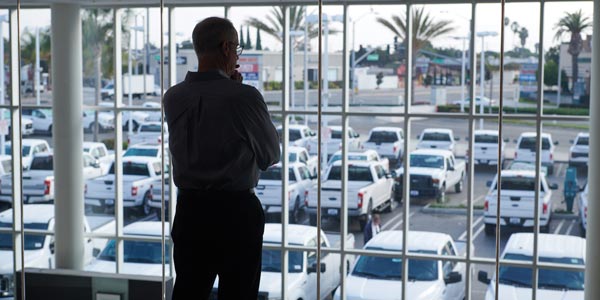
The trick is knowing where to look. Data-gathering technology companies are asking themselves the same question you are: What do I do with all this data? You think you have a lot of data, but telematics companies like Verizon Connect have exponentially more, and their goal is to bring you answers that allow you to focus on running your fleet. One of Verizon Connect’s latest strategies leverages machine learning—a subset of artificial intelligence that leans on algorithms and statistical models to analyze massive amounts of data and produce actionable recommendations and highlight trends.
“Machine learning is about taking massive amounts of data that we get from the vehicles and improving upon that data over time so that the insights that we deliver to customers is more accurate and comes at a quicker and more accurate pace,” Erin says as she invites you to have a seat as Kevin Aries, Verizon Connect product management and product success lead, joins the conversation.
“At the end of the day,” he says, “no matter what solutions our customers are using, it’s about delivering insights that are going to improve their business. Machine learning is just one way to get there.”
It’s the engine under the telematics hood that’s allowing software to see and recognize the elements in a video—the car pulling into an empty parking spot, the medium-duty truck entering the roundabout or the pedestrian scurrying across a crosswalk. In fact, collecting and analyzing video data is the next wave in telematics. It’s an opportunity that Verizon Connect has jumped on with the launch of Verizon Connect Integrated Video.
“Mobile Workforce Management is where we’re enabling our customers and their employees to deliver goods at a higher level of service. So when a delivery person is on the road and about to deliver a package, their customer can in turn use our technology to say, ‘Oh, the delivery is going to be here in 10 minutes.”
Erin Cave, vice president of product management at Verizon Connect
What is Integrated Video? Physically, it’s a connected, outward-facing dash camera that works with the Verizon Connect Reveal platform. You install it in a vehicle and it is activated when the engine starts. When the machine-learning system detects a harsh driving event such as hard braking, harsh cornering or hard acceleration, the video starts recording and matches that event with the telematics data. As the fleet manager, you get a notification in your email or on your phone of that harsh driving event. The Verizon Connect software displays all of the information and the video clip of the event.
“The video is only triggered when there is a harsh driving event,” Erin stresses, noting it’s not a constant stream of video being recorded.
But what exactly is a “harsh driving event”?
That’s what you decide.
With every detailed harsh driving event the Verizon Connect Integrated Video system notifies you about, you review the video and information, and then it asks you something like: “Do you consider this a harsh driving event?”
And you answer.
Your answer provides feedback to the machine-learning software and allows it to become smarter. In effect, you’re training the machine-learning model to better identify what you consider to be harsh driving events.
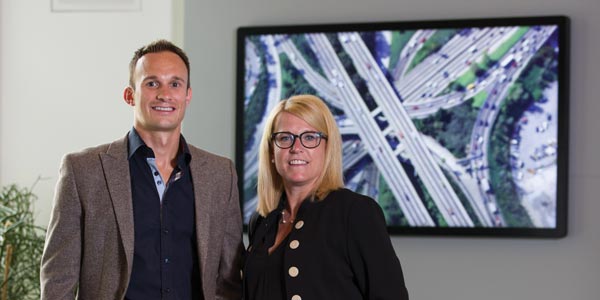
“Kevin, for example, sees an event and might say that is absolutely unacceptable, whereas another fleet manager might say, ‘That wasn’t great, but I’m not going to pin you on that one,’” she says. “And so, it’s a learning process. It’s categorizing these events.”
“We are allowing our customers to tell us how they’re interpreting videos in terms of their safety expectations—how unsafe or safe a situation is,” Kevin adds. “We take that feedback and improve how we provide that insight over time.”
Human interaction is necessary on both your end and Verizon Connect’s end.
“Our data science team is looking at all of the data,” Erin says. “We collect it, and they analyze it and say, ‘How did we categorize the event initially and would we do something different now that we’re looking at it with the feedback?’”
“And to Erin’s point about how different fleets interpret safe versus unsafe driving, we have the ability to create benchmarks, to create better safety scores, to create more intelligent insights that are going to allow businesses to figure out how safe or unsafe they may be comparably.”
But that’s a bit down the road. Right now, the name of the game is getting Integrated Video into trucks and getting them where they need to go. And once those trucks start moving, you start to see—literally what’s happening on the road—and match it up to what the data’s been telling you all along. You’ll start to notice trends immediately because a funny thing happens when you put a camera in your trucks.
“It dramatically reduces the number of harsh driving events. Drivers know you’re watching,” Erin says. “They can’t say, ‘No, that’s not exactly what happened,’ because the fleet manager can pull up the harsh driving event with the video and see that the driver did slam on the brakes. That presents an opportunity to coach the driver.”
Communication is key when installing video cameras in your trucks and discussing the safety impact of harsh driving events with drivers. Telematics has enabled you to make smarter equipment operation decisions, and now with video, you have to put that same effort into your driver management communication.
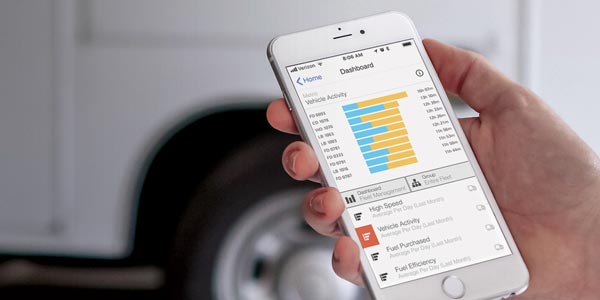
“It’s about trust,” Erin says. “It’s hard to retain drivers, but you have to let the driver know that in many cases, that in-cab video can help them; it can potentially exonerate them in the event of an accident. Those are the type of things that turn around driver attitudes. It’s when something like that happens and then they tell a friend, ‘I know you don’t want to use the video but it actually helped me out of a jam, and it showed that I didn’t do the wrong thing.’ That’s when it’s good for everybody.”
Driver training, improved equipment operation, the ability to see what happened, matching it to data—there are several roads to video solution ROI, but the direction is up to you.
“When Integrated Video launched, we wanted to make sure that we did it in a way in which we were providing our customers value, and frankly, that we’re getting value out of it,” Erin says. “And we’re still rolling out new features and functions. We are innovating to produce new features, applications and products on a daily, weekly and monthly basis. We’re really releasing software almost every day in such a lean way that it’s quick and it’s impactful. Gone are the days where there were two giant software releases a year.”
“That’s the beauty of software as a service–the value of the products that you invest in, continue to grow overtime, and to Erin’s point, we’re deploying value to our customers constantly based off of real-time feedback, and adding value that way.”
Talk of technology possibilities and future advancements is always heady, but what used to be an invisible force floating upon the airwaves is now a solution you can see as you take one last walk around the Verizon Innovation Center. You see that feed of the cramped side street and notice an open parking spot and think: What if the Verizon Smart City system could see that spot and since my truck is connected to the network, it could let me know that it’s available, making it easier to drop my load and taking some parking stress off of the driver’s shoulders?
Those types of solutions are on Verizon Connect’s radar.
“Customers are now discovering that there is so much more within the Verizon Connect portfolio and within Verizon as a whole that we can help them do better,” Kevin says. “They likely came to us looking for a very specific problem to solve, as most people who are shopping for new technology do, but the amount of new innovations, new problems that we’re solving, are making their initial investments so much more valuable.”
“I really enjoy the excitement of delivering new things and bringing value to customers,” Erin says with a nod. “When I’m on site with a customer, and I see how they deploy our technology in such completely different ways, in different verticals, that’s when I think: ‘Wow, we are making a difference to their business.’ And so for me, that’s the fun part.”

